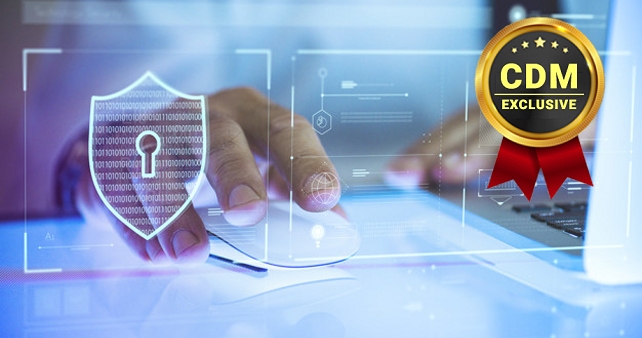Cybersecurity isn’t easy. Technology continues to evolve, and cyber attackers adapt and develop new malicious tools and techniques. There’s no magic solution, but there are a handful of things you can do that will greatly reduce your exposure to risk and significantly improve your security posture. The right platform, intelligence and expertise can help you avoid the vast majority of threats, and help you detect and respond more quickly to the attacks that get through.
To learn more about the challenges organizations face today with cybersecurity, and what you can do to improve your security posture, check out the on-demand webinar.
Challenges of Cybersecurity
Effective cybersecurity is challenging for a variety of reasons, but the changing perimeter and the confusing variety of solutions don’t help.
Long ago, during a time that is all but a distant memory by tech standards, cybersecurity was built around a concept of inside vs. outside, and us vs. them. The servers, applications, users and data inside the network were inherently trusted, and everything outside of the network was assumed to be a potential threat. The advent of free public Wi-Fi, portable laptops, mobile devices, and cloud computing have eroded the idea that there is any sort of perimeter, and most attacks leverage valid credentials and appear to be legitimate users, so the old model of defending the perimeter is no longer valid.
Meanwhile, as new platforms and technologies are developed, cybersecurity vendors inevitably create targeted point solutions for each one. The result is a confusing mix of tools and services that protect specific facets of the environment, but don’t play well with each other and don’t provide a holistic view of the whole infrastructure so you can understand your security posture as a whole.
The constantly expanding and evolving threat landscape doesn’t make it any easier, either. Attacks are increasingly complex and harder to identify or detect—like fileless or “Living off the Land” (LotL) attacks. The complexity of the IT infrastructure—particularly in a hybrid or multi-cloud environment—leads to misconfiguration and other human error that exposes the network to unnecessary risk. Attackers are also adopting machine learning and artificial intelligence to automate the process of developing customized attacks and evading detection.
Improve Your Cybersecurity
All of that sounds daunting—like cybersecurity is an exercise in futility—but there are things you can do. Keep in mind that your goal is not to be impervious to attack—there is no such thing as perfect cybersecurity. The goal is to increase the level of difficulty for an attacker to succeed in compromising your network, and to improve your chances of quickly detecting and stopping attacks that occur.
Here are 5 tips to help you do that:
- Assess your business objectives and unique attack surface: Choose a detection method that can address your workloads. For instance, cloud servers spin up and spin down constantly. Your detection must follow the provision and deprovision actions of your cloud platform(s) and collect meta data to follow events as they traverse this dynamic environment. Most SIEMs cannot do this.
- Eliminate vulnerabilities before they need threat detection: Use vulnerability assessments to identify and remove weaknesses before they become exploited. Assess your full application stack including your code, third party code, and code configurations.
- Align data from multiple sources to enhance your use cases and desired outcomes: Collect and inspect all three kinds of data for suspicious activity: web, log, and network. Each data type has unique strengths in identifying certain kinds of threats and together present a whole picture for greater accuracy and actionable context.
- Use analytics to detect today’s sophisticated attacks: ensure your threat detection methods look at both real-time events and patterns in historical events across time. Apply machine learning to find what you do not even know to look for. If you use SIEM, enlist machine learning to see what correlation missed and better tune your SIEM rules.
- Align security objectives to your business demands: There is more than one way to improve your security posture and detect threats. While SIEMs are a traditional approach, they are most useful for organizations that have a well-staffed security program. A SIEM alone is not the best solution for monitoring threats against today’s web applications and cloud environments
To learn more about the challenges organizations face today with cybersecurity, and what you can do to improve your security posture, check out the on-demand webinar.
About the Author
 Tony Bradley is Senior Manager of Content Marketing for Alert Logic. Tony worked in the trenches as a network administrator and security consultant before shifting to the marketing and writing side of things. He is an 11-time Microsoft MVP in security and cloud and has been a CISSP-ISSAP since 2002. Tony has authored or co-authored a dozen books on IT and IT security topics, and is a prolific contributor to online media sites such as Forbes and DevOps.com. He has established a reputation for effective content marketing, and building and engaging a community and social media audience.
Tony Bradley is Senior Manager of Content Marketing for Alert Logic. Tony worked in the trenches as a network administrator and security consultant before shifting to the marketing and writing side of things. He is an 11-time Microsoft MVP in security and cloud and has been a CISSP-ISSAP since 2002. Tony has authored or co-authored a dozen books on IT and IT security topics, and is a prolific contributor to online media sites such as Forbes and DevOps.com. He has established a reputation for effective content marketing, and building and engaging a community and social media audience.





 We are in our 11th year, and Global InfoSec Awards are incredibly well received – helping build buzz, customer awareness, sales and marketing growth opportunities, investment opportunities and so much more.
We are in our 11th year, and Global InfoSec Awards are incredibly well received – helping build buzz, customer awareness, sales and marketing growth opportunities, investment opportunities and so much more.